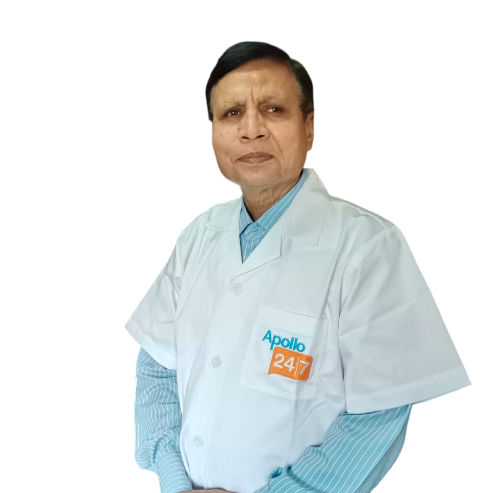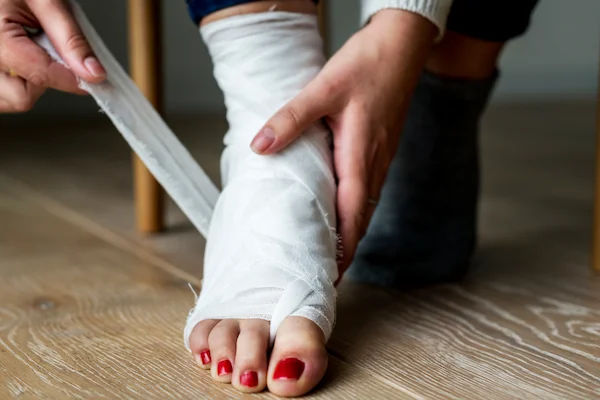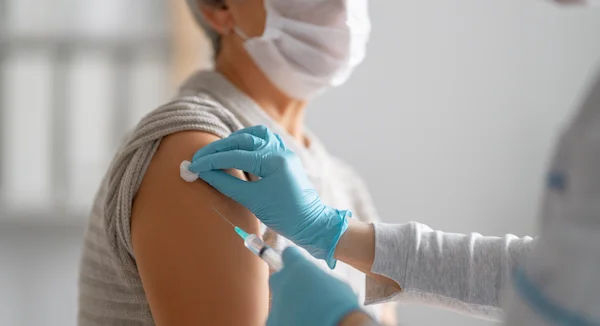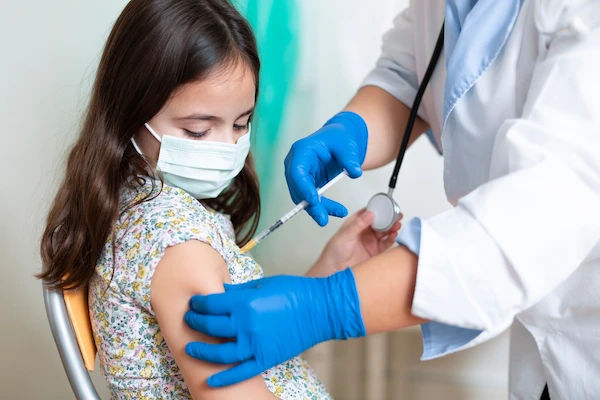Guide to Orthopaedic Health And Tips For Preventing Injuries
Get expert tips and a comprehensive guide to orthopedic health. Learn about common conditions, prevention strategies, and effective treatments to keep your bones, joints, and muscles strong. Start your journey to a pain-free, active life today!


Introduction
Your orthopaedic health is the invisible framework that allows you to live life to the fullest—from playing with your kids and pursuing your favorite sports to simply enjoying a pain-free walk. It encompasses the well-being of your bones, joints, muscles, ligaments, and tendons. Yet, we often take this complex system for granted until something goes wrong. The good news is that many common orthopaedic issues, from chronic joint pain to acute sports injuries, are largely preventable. This comprehensive guide is designed to empower you with knowledge and practical strategies. We'll dive deep into how your musculoskeletal system works, identify common threats to its health, and provide an actionable plan to strengthen your body, prevent injuries, and maintain your mobility for years to come. Think of this as your owner's manual for a stronger, more resilient you.
Understanding Your Musculoskeletal System: The Body's Framework
Before we can protect something, we must understand it. Your musculoskeletal system is a marvel of biological engineering, providing form, support, stability, and movement to your body. It's a collaborative network where each part relies on the others.
Bones: More Than Just a Scaffold
Bones are living, dynamic tissues that do far more than just provide structure. They protect our vital organs (think skull protecting the brain, ribs protecting the heart), produce blood cells in the bone marrow, and act as a mineral reservoir, storing calcium and phosphorus. Peak bone mass is typically achieved by age 30, making the earlier years critical for building a strong foundation. After that, maintenance is key to prevent conditions like osteoporosis later in life.
Muscles and Tendons: The Engines and Cables
Over 600 muscles in your body are the engines of movement. They contract and relax to pull on bones. Attaching these muscles to bones are tendons—tough, fibrous cords that act like cables. Healthy, strong muscles are essential not just for power but also for stabilizing your joints, reducing the wear and tear on them. A common muscle strain occurs when a muscle is overstretched or torn, often due to fatigue or overuse.
Ligaments and Cartilage: The Stabilizers and Shock Absorbers
While tendons connect muscle to bone, ligaments connect bone to bone, providing crucial stability to your joints and preventing excessive movement that could cause dislocation. Cartilage, the smooth, rubbery tissue that covers the ends of bones within joints, is the body's ultimate shock absorber. It allows for smooth, frictionless movement. The gradual wear-down of this cartilage is a primary feature of osteoarthritis, one of the most common chronic orthopaedic conditions.
Consult Top Specialists
Common Orthopaedic Injuries and Conditions: Knowing What Can Go Wrong
Understanding common problems helps in recognizing early signs and taking preventive action.
Acute Injuries: Sprains, Strains, and Fractures
- These happen suddenly, often during physical activity or an accident.
- Sprain: A stretch or tear of a ligament (e.g., rolling your ankle causes an ankle sprain).
- Strain: A stretch or tear of a muscle or tendon (e.g., pulling a hamstring while running).
- Fracture: A break in a bone, which can range from a hairline crack to a complete break.
Chronic Conditions: Arthritis and Osteoporosis
- These develop over time and are often related to aging, lifestyle, or genetics.
- Arthritis: Literally meaning "joint inflammation," it encompasses over 100 types. Osteoarthritis (wear-and-tear) is the most common, while rheumatoid arthritis is an autoimmune disorder. Symptoms include joint pain, stiffness, and swelling.
- Osteoporosis: A condition where bones become weak and brittle, increasing fracture risk. It's often called a "silent disease" because bone loss occurs without symptoms.
The Pillars of Proactive Orthopaedic Health: Your Prevention Plan
Prevention is always better than cure. A proactive approach built on these four pillars can significantly reduce your risk of common orthopaedic injuries.
Pillar 1: Nutrition for Strong Bones and Muscles
You literally are what you eat when it comes to bone and muscle health.
Key Nutrients: Calcium, Vitamin D, and Protein
- Calcium: The primary building block of bone. Find it in dairy, leafy greens, and fortified foods.
- Vitamin D: Essential for calcium absorption. Your body makes it from sun exposure, but it can also be found in fatty fish and fortified foods. Apollo24|7 offers a convenient home collection for tests like vitamin D if you suspect a deficiency.
- Protein: Crucial for building and repairing muscle tissue. Include lean meats, beans, lentils, and nuts in your diet.
Pillar 2: Exercise and Strength Training
Regular activity is non-negotiable for orthopaedic health.
Building Bone Density and Muscle Mass
Weight-bearing exercises (walking, running, dancing) and resistance training (lifting weights, using resistance bands) stress your bones and muscles in a good way, signaling your body to make them stronger and denser. This is your best defense against osteoporosis and sarcopenia (age-related muscle loss).
Improving Flexibility and Balance
Activities like yoga, Pilates, and tai chi improve flexibility, which reduces injury risk, and enhance balance, which is
critical for preventing falls as we age.
Pillar 3: Proper Posture and Ergonomics
Your body is designed for movement, not for staying in one position for hours.
Setting Up Your Workspace for Spine Health
Ensure your desk, chair, and monitor are set up to support a neutral spine. Your feet should be flat on the floor, knees at hip level, and screen at eye level. Take a break to stand, stretch, and walk every 30 minutes.
Mindful Movement in Daily Life
Be conscious of your posture when standing and walking (shoulders back, head high). Lift heavy objects with your legs, not your back, by bending at the knees and keeping the object close to your body.
Pillar 4: Smart Sports Participation and Injury Prevention
Staying active shouldn't mean getting hurt.
The Importance of Warm-Ups and Cool-Downs
A proper 5-10 minute warm-up (light cardio and dynamic stretches) prepares your body for activity. A cool-down with static stretching helps with recovery and flexibility.
Using the Right Gear and Technique
Wear appropriate, well-fitting footwear and protective gear for your sport. Perhaps most importantly, learn and use the correct technique. Poor form is a fast track to an overuse injury like tendonitis.
When to Seek Professional Help: Listening to Your Body
While prevention is powerful, it's crucial to know when to get help. Consult an orthopaedic specialist if you experience:
- Persistent pain that lasts more than a few days and doesn't improve with rest.
- Significant swelling, bruising, or deformity around a joint or bone.
- Inability to bear weight or use the joint normally.
- Numbness, tingling, or loss of sensation.
- Symptoms that lock a joint in place or cause instability.
If your condition does not improve after trying rest and home remedies, book a physical visit to a doctor with Apollo24|7 for a proper diagnosis and treatment plan. Early intervention can prevent a minor issue from becoming a major one.
Conclusion: Investing in Your Mobility for a Lifetime
Your orthopaedic health is one of your most valuable assets. It's the foundation upon which you build a vibrant, active, and independent life. By understanding how your body works and embracing a proactive approach centered on smart nutrition, consistent exercise, proper posture, and mindful activity, you empower yourself to prevent injuries and manage the natural changes that come with age. This isn't about achieving perfection but about making consistent, positive choices that add up over a lifetime. Start today by implementing one or two tips from this guide. Your future self—able to move freely, without pain, and fully engaged in the activities you love—will thank you for the investment.
Consult Top Specialists
Consult Top Specialists

Dr. Manoj Dinkar
Orthopaedician
15 Years • MBBS, Dip (Orthopaedics)
New Delhi
THE DOCTORS NESST, New Delhi
Dr. Anil Sharma
Orthopaedician
42 Years • MBBS, MS Orthopedics
New Delhi
AAKASH MEDSQUARE, New Delhi

Dr. Anil Pradeep Jadhav
Orthopaedician
23 Years • MBBS MS (Ortho)
Nashik
Apollo Hospitals Nashik, Nashik
(25+ Patients)

Dr. Pradeep Lucas
Orthopaedician
7 Years • MBBS, Diploma in Orthopaedics, Fellowship in DFSI
Bengaluru
Revival Multispeciality Clinic, Bengaluru

Dr. Padam Singh Gautam
General Physician/ Internal Medicine Specialist
43 Years • M.B.B.S (WARDHA M. S.), F.A.G.E. (MANIPAL), F.A.I.M.S. (Pb.), M.A.I.M.S. (Pb.), M.R.S.H. (LONDON)
Noida
Dr Padam Singh Gautam Fracture Clinic, Noida
(50+ Patients)
Consult Top Specialists

Dr. Manoj Dinkar
Orthopaedician
15 Years • MBBS, Dip (Orthopaedics)
New Delhi
THE DOCTORS NESST, New Delhi
Dr. Anil Sharma
Orthopaedician
42 Years • MBBS, MS Orthopedics
New Delhi
AAKASH MEDSQUARE, New Delhi

Dr. Anil Pradeep Jadhav
Orthopaedician
23 Years • MBBS MS (Ortho)
Nashik
Apollo Hospitals Nashik, Nashik
(25+ Patients)

Dr. Pradeep Lucas
Orthopaedician
7 Years • MBBS, Diploma in Orthopaedics, Fellowship in DFSI
Bengaluru
Revival Multispeciality Clinic, Bengaluru

Dr. Padam Singh Gautam
General Physician/ Internal Medicine Specialist
43 Years • M.B.B.S (WARDHA M. S.), F.A.G.E. (MANIPAL), F.A.I.M.S. (Pb.), M.A.I.M.S. (Pb.), M.R.S.H. (LONDON)
Noida
Dr Padam Singh Gautam Fracture Clinic, Noida
(50+ Patients)
More articles from Preventive Treatment
Frequently Asked Questions
1. What's the difference between an orthopaedic surgeon and a physiotherapist?
An orthopaedic surgeon is a medical doctor who diagnoses and treats musculoskeletal conditions, performing surgery when necessary. A physiotherapist is a rehabilitation expert who uses exercises, manual therapy, and education to help patients recover movement and function, often after an injury or surgery. They work together as a team.
2. I have knee pain when going downstairs. What could it be?
This is a common symptom often related to patellofemoral pain syndrome (runner's knee), where the cartilage under the kneecap is irritated. It can also be an early sign of osteoarthritis. Strengthening the quadriceps and hips often helps, but if symptoms persist beyond two weeks, consult a doctor online with Apollo24|7 for further evaluation.
3. Are cracking knuckles bad for your joints?
Generally, no. The popping sound is likely caused by gas bubbles bursting in the synovial fluid that lubricates your joints. However, if knuckle cracking is accompanied by pain or swelling, it could indicate an underlying issue like arthritis or ligament injury and should be checked.
4. How can I prevent osteoporosis?
The best prevention is building strong bones in your youth through a calcium-rich diet and weight-bearing exercise. As an adult, maintain these habits, ensure adequate vitamin D levels for calcium absorption, avoid smoking, and limit alcohol intake.
5. Is it better to use heat or ice for pain?
As a general rule: use ice for acute injuries (first 48 hours) or any new, inflamed, swollen area to reduce inflammation. Use heat for chronic muscle pain or stiffness to relax muscles and improve blood flow. When in doubt, ice is usually the safer initial choice.

.webp)


